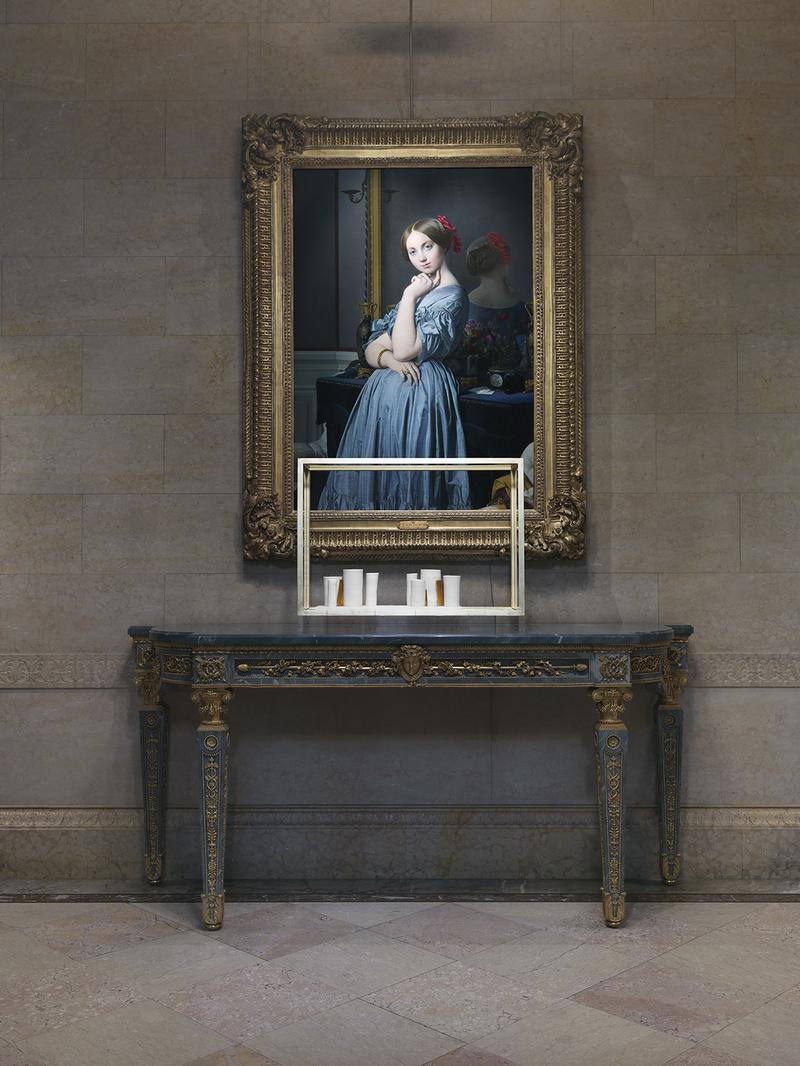
Do the Old Masters ever yearn for fresh company? Apparently so. The Frick Collection recently started mounting shows by contemporary artists, inviting them to exhibit their work alongside that of Chardin and Vermeer and the rest. In 2016, Arlene Shechet showed a group of charismatic porcelain sculptures in a room overlooking the Frick’s garden. Now Edmund de Waal, a British potter and writer, has installed his own porcelains throughout the museum, mostly on top of ornate furniture. “Elective Affinities,” as his installation is called, consists of a series of nine spare, tabletop-scaled pieces that pay undisguised tribute to the Frick’s collection.
De Waal, incidentally, is the author of “The Hare with Amber Eyes,” a singularly well-written memoir that became a word-of-mouth bestseller in 2010. It looks back at a branch of his family, the Ephrussis, cultivated Jewish bankers who lost most everything in World War II. But something precious did survive: a collection of 264 netsuke figures that were hidden by a maid under a mattress and returned years later to the family.
The theme of collecting remains central to de Waal’s show at the Frick. Objects do not appear by themselves, but are assigned to little clusters and family groupings inside of roomy glass vitrines. The arrangements of various objects – porcelain vessels and steel plates, strips of gold broken into tiny shards, a sheet of alabaster – can put you in mind of the unassuming quietude of a Morandi still life. They also evoke the lucid geometries of Minimalist sculpture, as if a Joel Shapiro or a Richard Serra had been shrunk down to miniature proportions and encased for safekeeping in a box.
But, unlike the Minimalists, with their blunt vectors and displays of bravado, de Waal’s work feels erudite and literary. The exhibition catalogue, which includes an inspired essay by the artist, provides essential background information. I enjoyed learning that de Waal’s piece “An Alchemy” – amusingly installed in a niche in the massive wood desk that belonged to Mr. Frick – occupies a space that usually houses the 10-volume, leather bound Book of Wealth. De Waal has replaced the books with an assembly of gunmetal-gray objects that include stacked-up blocks of steel – a reminder that Frick’s collection is inseparable from his identity as a steel industrialist, with all the avarice that implies.
Truth be told, I had never noticed Frick’s elephantine desk before this, despite countless visits to the Frick. I tend to be panting-centric and admittedly have little interest in 18th century side tables from France, with their marbled gray surfaces and gilded trimmings. But de Waal is a master observer who see paintings in relation to other things – be they curly gold frames, or side tables, or brocaded wallpaper, or just other paintings, and his latest installation at the Frick makes you feel the pathos of collections of objects – which may last as a group forever, or may not last at all.
